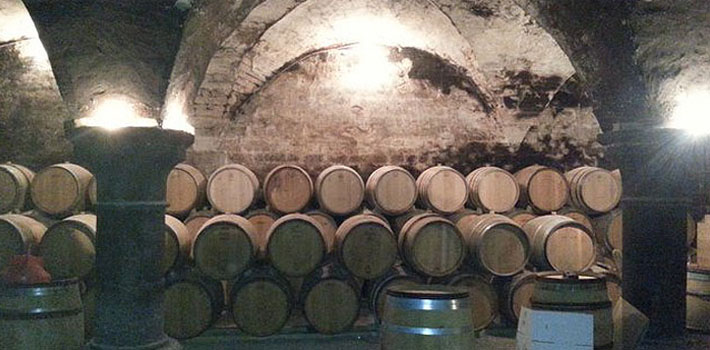Domaine Joliet
The Clos de la Perriere in Fixin, founded by the Cistercians in 1142, is a walled-in vineyard that the monks way back when knew made an exceptional wine.
Inside those walls however, the vineyard is composed of 4 distinct parcels. And while each of these 4 parcels on its own produces an interesting wine, the four together make magic.
That the monks knew this back in the Middle Ages is not, in itself, extraordinary. They had time, and plenty of ‘ora et labora’. And as, over time, they came to know where the best vineyards were, they put walls around them.
There are lots of vineyards called ‘clos de something-or-other’ in Burgundy. The best known of course is the Clos de Vougeot. But where the Clos de la Perriere is different, unique even, is that it has never been divided up. If the idea of putting a wall around a vineyard was to enclose various parcels of land that are component parts of one great wine, then dividing and selling off parcels within the clos can only dim the original vision.
In 1855 Dr. Lavalle classified the Clos de la Perriere as ‘tete de cuvee’, as he did most of the present-day grand cru vineyards. Two years previous, the Joliet family bought the Clos, and it has been in their family for six generations, with Benigne Joliet at the helm today. Perhaps because the wine at the time was not up to its potential, perhaps simply because it is Fixin, who knows, but when the modern classifications were made, the Clos was relegated to premier cru.
But Benigne Joliet knows that it is a grand cru. Perhaps the only vineyard of grand cru stature still intact that was laid out by the monks in the Middle Ages. And he is fighting to have it recognized as such, both with the AOC people and in the cellar.
I have had the pleasure of tasting the 2013 in its component parts, 4 Cuvees from the four parcels inside the walls. Benigne Joliet presented it dramatically. Cuvee #4, the oldest vines from the parcel the furthest to the north was alive, like only wine from well-tended vines can be alive. Depth and density. Cuvee #2, the youngest vines gives vivacity, a bright acidity over soft tannins. Cuvee #1 from the parcel the furthest south, and hence the earliest harvested, gives you the fruit, a big burst of fruit. And Cuvee #3, from the edge of the wall near the forest at the top of the vineyard gives the bottom, the edge, the tannin.

But like four notes in a chord, when Benigne blended together the approximate assemblage that will be 2013 Clos de la Perriere, the wine sang. Bright, peppery, alive, with big yet subtle fruit and a long, long finish.
Fixin 1er Cru ‘Clos de la Perriere’ from Domain Joliet. Relatively unknown. Poised again for greatness after nearly 900 years!
Principles:
Benigne Joliet has radically changed production methods at the Clos de la Perriere during his stewardship. Each of these lieu-dit parcels listed above is picked and vinified separately. And 4 separate cuvees are eventually assembled before bottling. Yields have been greatly reduced. Harvest follows the maturity of each individual parcel, the grapes are picked as late as possible. The grapes are sorted and destalked, then fermented with a minimum of handling. Each cuvee is considered separately in terms of manipulations, punching down or pumping over. The wines are raised in 15% new Troncais oak for 24-36 months with no racking.
Appellations White
Fixin 1er Cru ‘Clos de la Perriere’
Appellations Red
Fixin
Fixin 1er Cru ‘Clos de la Perriere’ *
*Within the Clos de la Perriere are lieu-dit parcels:
Queue de Hareng
Bas de Chemin
Vierge Jeune and Vieille
Parc Bas and Haut
Quatre Peupliers